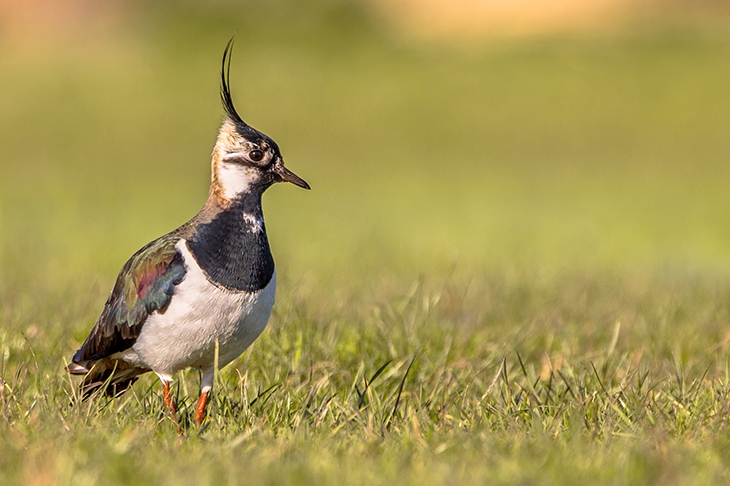Some birds seem inherently comical. I can’t help being amused by the duck taking its name from its habit of ducking. In English it has enjoyed this name for some time — a thousand years or so. Before that it was called ened, a word related to the Latin anas, anatem.
Similarly, the swift is so called because it is swift. That name seems to go back fewer than 400 years, and I’m not sure what it was called before that. Swallow, perhaps, since it has something in common with it.
But there are some false friends among the feathered tribes. The lapwing was itself friendless last week, when Natural England stopped farmers shooting its predators. Its alternative name, peewit, comes from its cry, and it is also known as the peeweep, peesweep or tewhit.
Its older name, lapwing, has nothing to do with a lap or a wing. In this, John Minsheu was mistaken when, in his Ductor in linguas: the Guide into Tongues (1617), he said it was so called ‘because he lappes or clappes the wings so often’. Minsheu — whose own strange name may derive from the village of Minshull in Cheshire — found no fortune in lexicography. He called his comparison of words in 11 languages ‘the most unprofitable and unpleasant studie’, labouring to provide a ‘candle to light others, and burne out my selfe’. Anyway a lapwing is, as it were, a leap-wink.
Before the Conquest, the form of the name was hléapewince, and the winc part meant ‘to waver’, like the wink of an eye. The Oxford English Dictionary attributes this name to the bird’s manner of flight. Birdwatchers will tell me whether it might also refer to the bird’s distraction behaviour of drawing predators away from its nest on the ground by pretending to have a broken wing.
As for the wheatear, its Cornish name is still, they tell me, whiteass. Thomas Fuller, in his Worthies of England (1662), said that its name came from it being ‘fattest when wheat is ripe’, but wheat doesn’t come into it, since the first syllable means ‘white’. The French give a similar name to the green sandpiper, chevalier culblanc.
I suppose it’s the opposite of a robin redbreast.





Comments